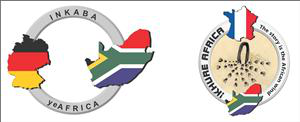Speaker
Mr
Chris Samakinde
(University of the Western Cape)
Description
Clay minerals diagenesis phenomenon and their effects on some petrophysical properties of lower cretaceous silliciclastic sandstones, offshore Orange basin have been established. Previous studies on Orange basin revealed that chlorite and quartz cements have significantly compromised the reservoir quality in this basin but it is expected that the reservoirs shows better improvement basinward where thge depositional environment is different, an analogy of this is displayed by tertiary sandstones deposit, offshore Angola.
Five lithofacies were identified based on detailed core description from wells KF-1, KH-1 and AU-1 in block 3A, offshore Orange basin. The facies were grouped based on colour and grain sizes, they are named: A1 (shale), A2 (sandstone), A3 (siltstone), A4 (dark coloured sandstone) and A5 (conglomerates). Depositional environment is predominantly marine, specifically, marine delta front detached bars and deepwater turbiditic sandstone deposit. Geophysical wire line logs of gamma ray, resistivity logs combo and porosity logs were interpreted, parameters and properties such as VCL, porosity, permeability and saturation were estimated from these logs and the values obtained were compared with values from conventional core analysis data, the values agreed well with each other
The reservoir within KF-1 well is approximately 5m thick and has an extreme low permeability value averaging 0.01 md, core porosity of 10 %, sonic log derived porosity of 14.6 % and average gas and water saturation of 18 % and 82% respectively (Simandoux model). AU-1 well reservoir is 6.5 metres thick with an estimated average value of 10 % for neutron and density porosity and core porosity, permeability of 0.015md, VCL (volume of clay) of 32 % and water saturation value of 65 %. KH-1 well has reservoir thickness of about 9 m while water saturation estimated from Simandoux saturation model is 50 %. Density porosity value is low with an average of 8.9 %, VCL of 30 % and extreme low permeability value of 0.09 md.There were consistent presence of kaolinite, montmorillonite and quartz cement within the reservoirs of the three wells from observations made from SEM, SEM also revealed the presence of chlorite at a deeper depth, chlorite might have been formed from kaolinite due to the presence of Mg and Fe as observed from EDS plus an alkaline pore fluids as interpreted from the porewater pH. SEM also revealed the presence of illite in KH-1 well which is not present in the other two wells (AU-1 and KF-1).
The pH of pore waters in all wells range from slightly acidic nature to predominant alkaline pore fluids, specifically from 6.78 - 9.5 while CEC ranges between 27 - 64.5 meq/100g for AU-1 well, 5 - 6.6 meq/100g for KF-1 well, and 7.3 - 80.5 meq/100g for KH-1 well. The values above suggest the dominance of mixed clay minerals of kaolinite-smectite and smectite-illite layers coupled with the occurrence of chlorite and illite which may have formed at a later stage of the paragenetic sequence.
Judging by this study, the peculiar Orange basin reservoir quality problems persist and ultra deep waters may be further explored for reservoirs with better quality.
Primary author
Mr
Chris Samakinde
(University of the Western Cape)
Co-authors
Prof.
Jan van bever Donker
(University of the Western Cape)
Dr
Opuwari Mimonitu
(University of the Western Cape)

